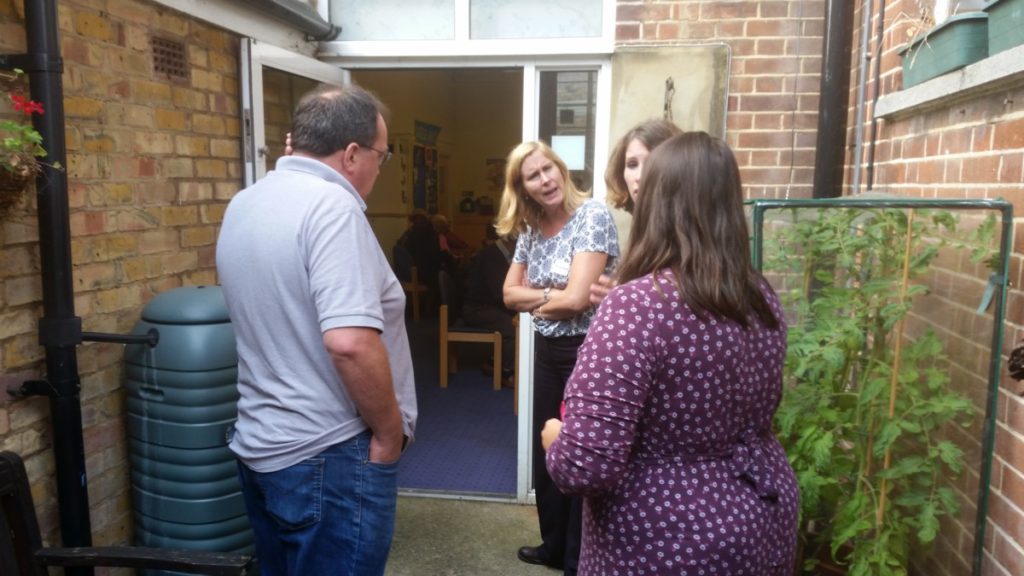Written by:
By Stephen Smith
Our recent workshop with Age UK in Enfield was a whistle-stop review, an inspiring tour and also a glance to the future possibilities – all wrapped into a busy morning. It once again confirmed the advantages of getting everyone around the table early in the design process to think through the objectives and motives of the group as a whole. With the pressures that Local Authority and Charity groups are under, our workshop struck a chord about the need to take time out of busy schedules for reflection. We must say that ‘busy’ is an understatement when we are talking about the non-stop daily routines of carers, centre managers and local authority representatives; especially when their paths may only fleetingly converge for matters other than the immediate, urgent needs of their clients.
We started with an open discussion about what works well and what doesn’t work well in a building that has the potential to be transformed and re-energised. This building was originally a library, then a snooker hall and now a day-centre for those with dementia. Remnants of each previous use were evident; timber panelling that would have formed bookshelving to the library, and one full size snooker table acting as an oversized layout space and a general nuisance in the main first floor room. The high level windows were praised for giving a bright feeling throughout. The sense that you were going back to your school hall made an important connection for those suffering from dementia, given that there is a need for memory engagement as an important aspect of their care.


Flow between spaces were discussed, the disconnect between ground and first floor and the poor communication systems. We all laughed warmly about how staff and clients can go missing within the small warren of connecting spaces, how there is no quiet space to take a call or send an email, how a make-do attitude can work but was often a strain. The kleptomania inclined within the client group were jovially named and shamed, a problem for open plan offices. We came to understand how crucial a great sense of humour is to be a good carer, how important the welcoming front door is, and how the friendship tree in the foyer offers a symbol of the warm, secure embrace that the centre offers to all.
During the workshop it was clearly communicated how the various members of the group respected and relied on their broad range of shared skills. We were even joined by two of the centre’s clients who reminisced about the library and told us how they now enjoy getting their hair cut in the retro 50’s salon chairs. They said they “wouldn’t change anything at all”. Odd perhaps in a building in much need of both essential repairs and more radical overhaul to provide more usable space. But less odd when you consider that ‘change’ of any type is unnerving and disconcerting to those with dementia. As a group we noted that any change will need to be sensitively managed and will mean some temporary uprooting while works are carried out.
The staff, as is so often the case, know no limits to their kindness and dedication, to the extent that they have an open door policy for everyone and no distinctly separate area for them to meet or take their breaks. We discussed how it would be nice to provide separate meeting, office and staff rest areas. We also discussed how there was too much pressure on the central communal rooms, especially when music and dancing is happening, and that some flexible mid-sized rooms for break-out activities would be a big benefit.
We ended on a discussion about the importance of design, aided by visual prompts largely taken from the pioneering Maggies centres. In these cases, the architects had been given a free hand to challenge conventions of care buildings – to bring fun, delight and character to the spaces. Their use of light, colour, textures and views were cues that led to us discussing the importance of hearing the laughter of children from the nearby school playground; the possibility of some cross-generational exchange; the importance of views out, both close and far, reflective and active; and above all else, the need for outdoor garden space.
We wish the group success in building their brief and understanding the positive impact of good design decisions. We left them pondering big and small changes, and feeling more unified in their vision for some exciting transformations ahead.
Stephen Smith is a Glass-House Enabler and a partner at Wright&Wright Architects.
